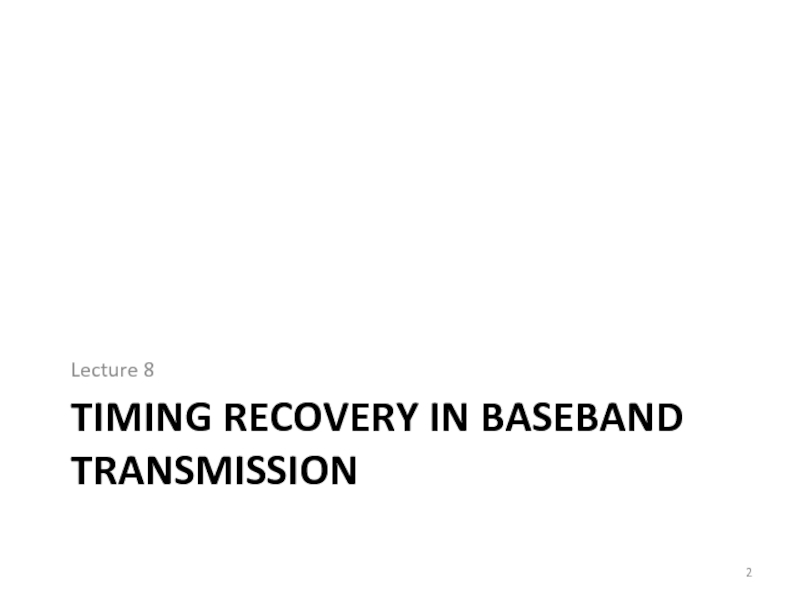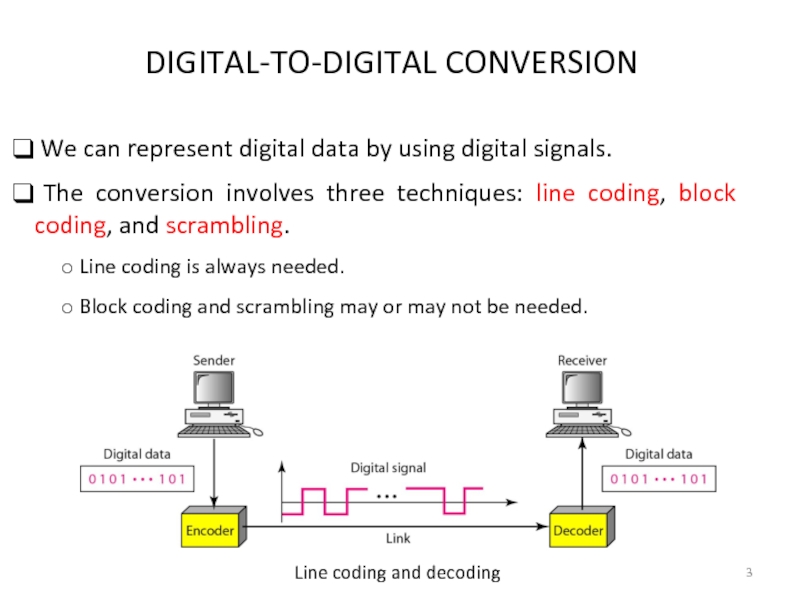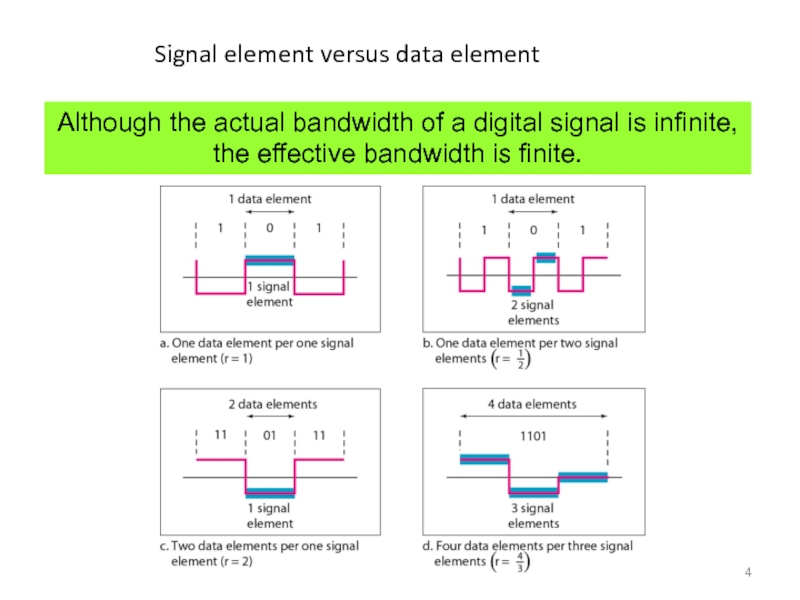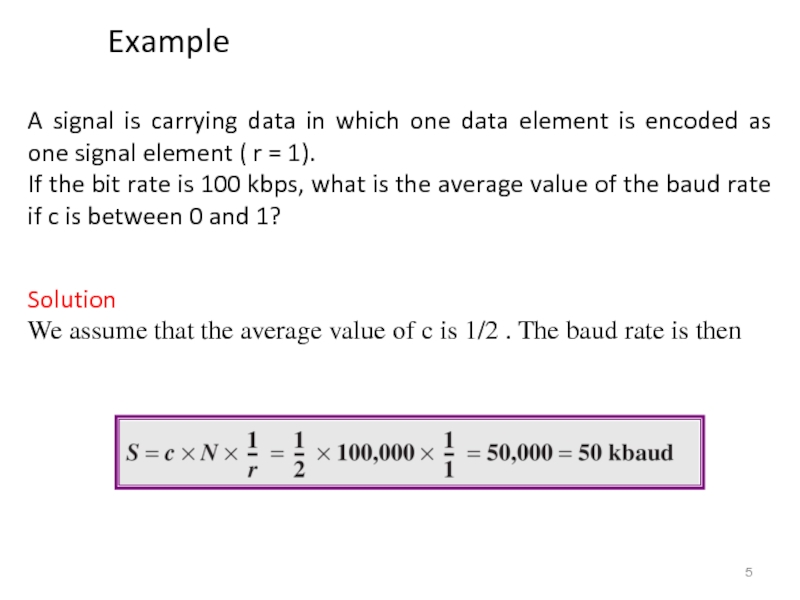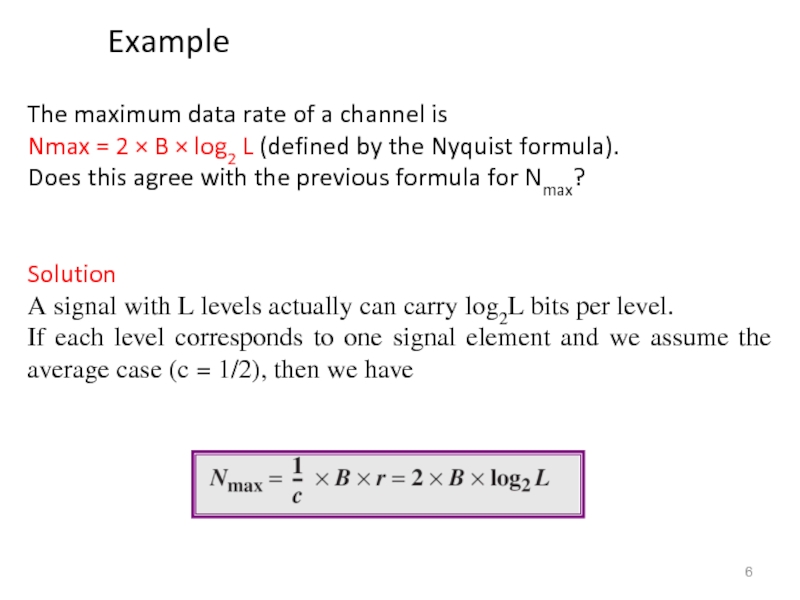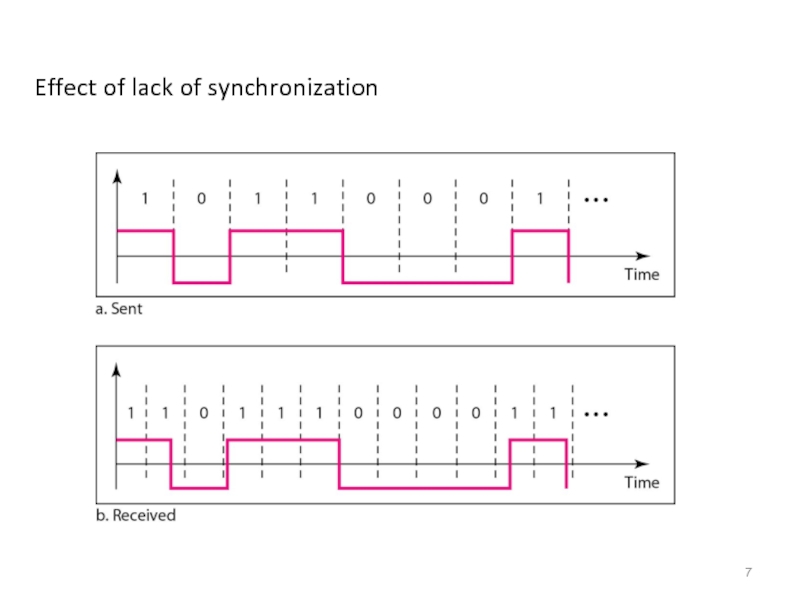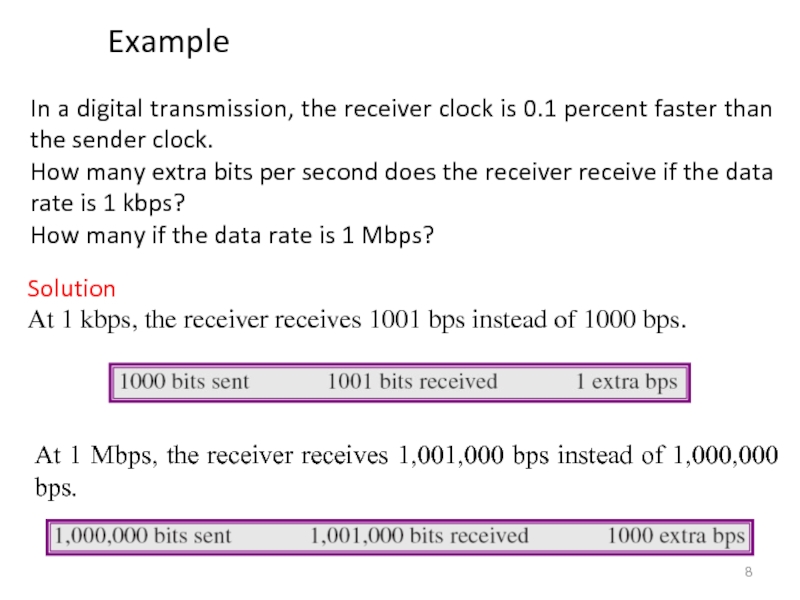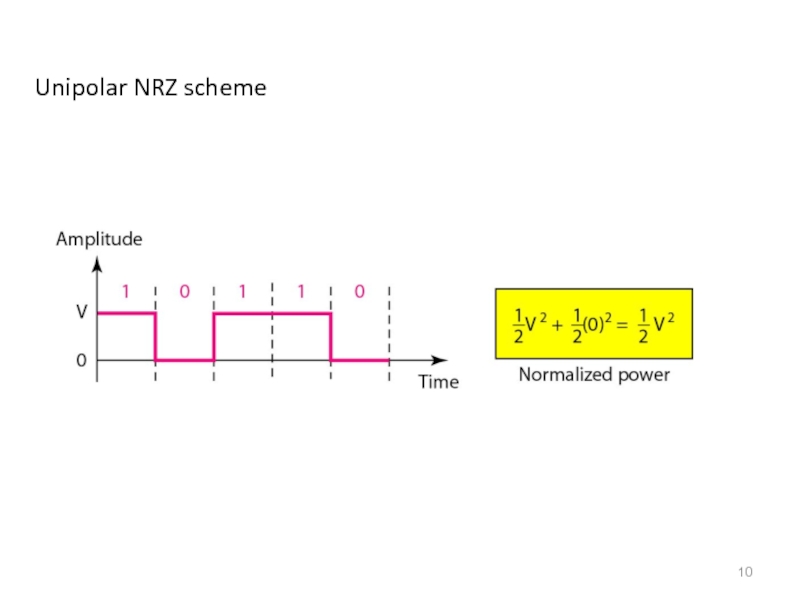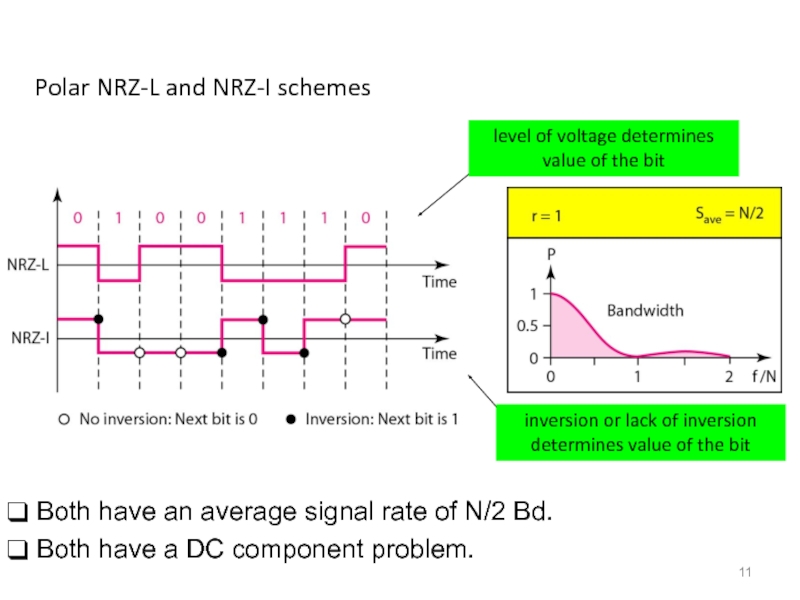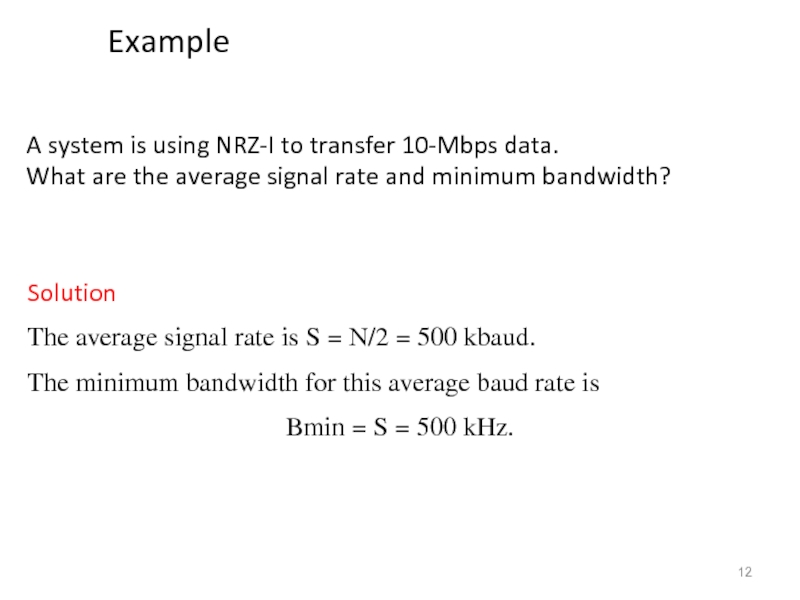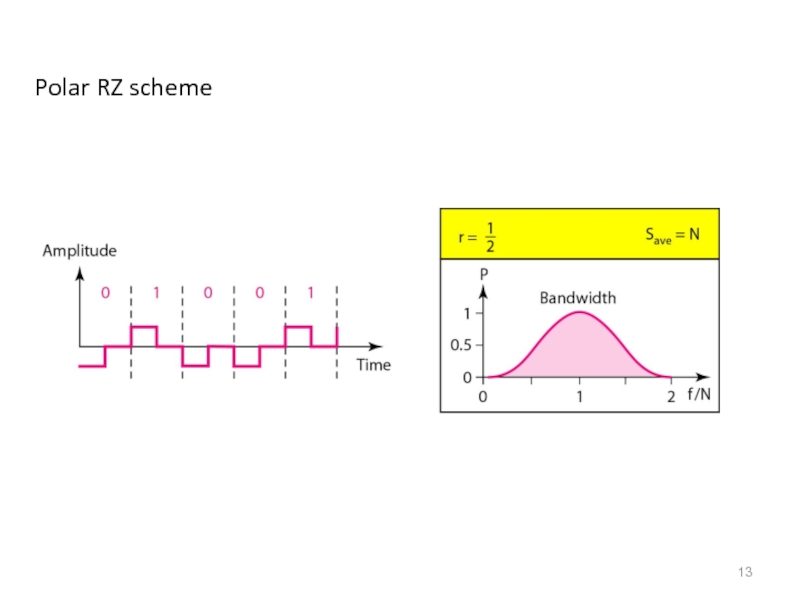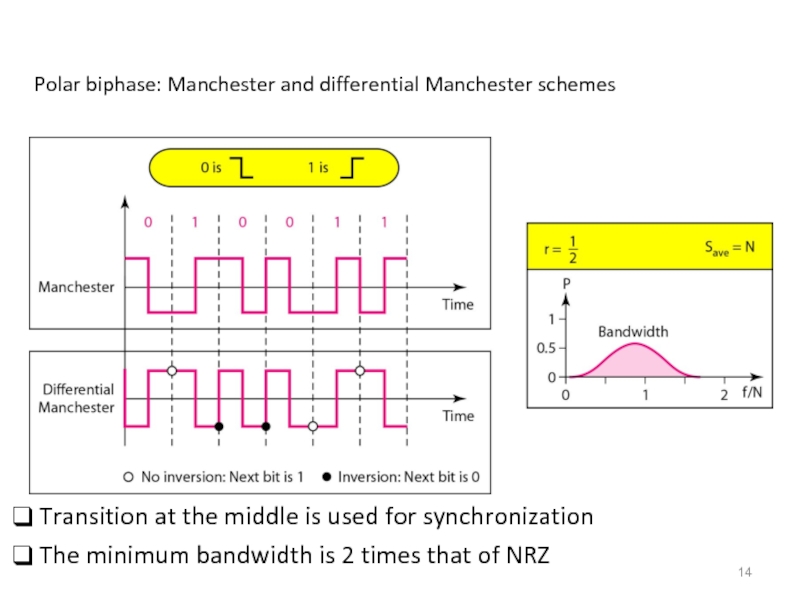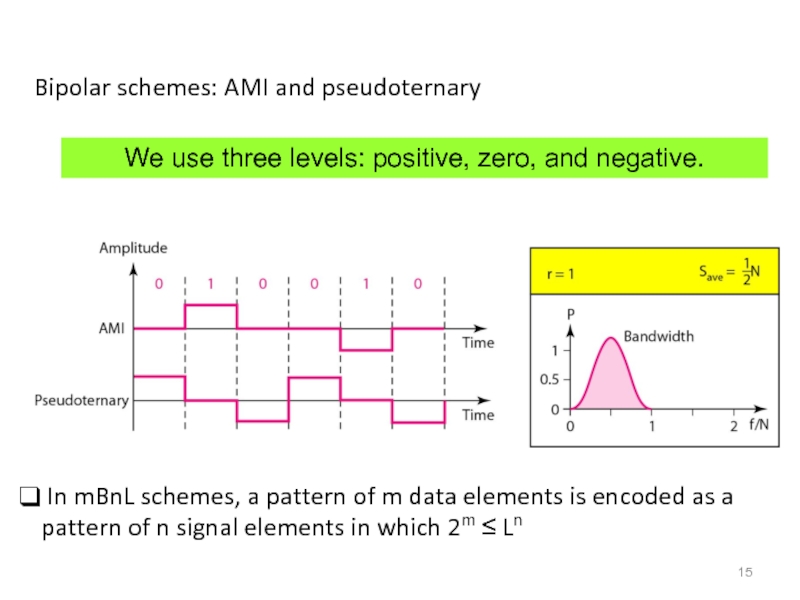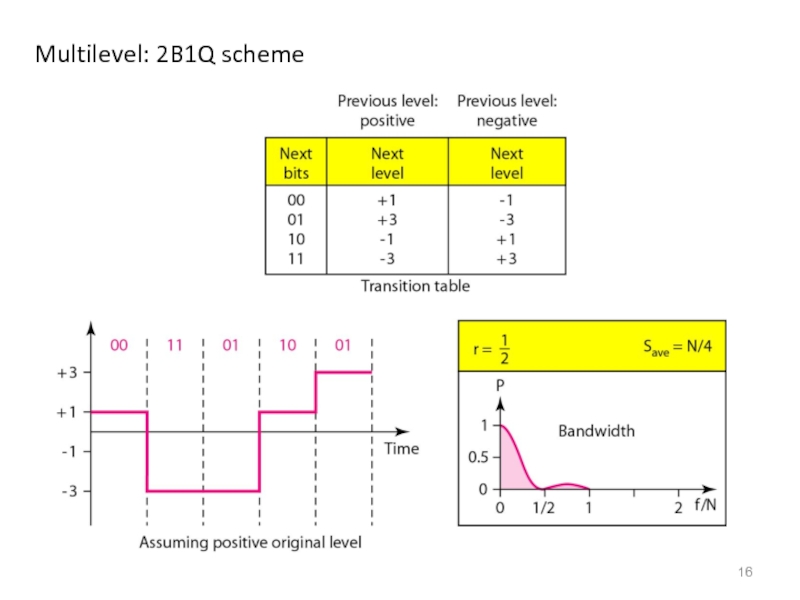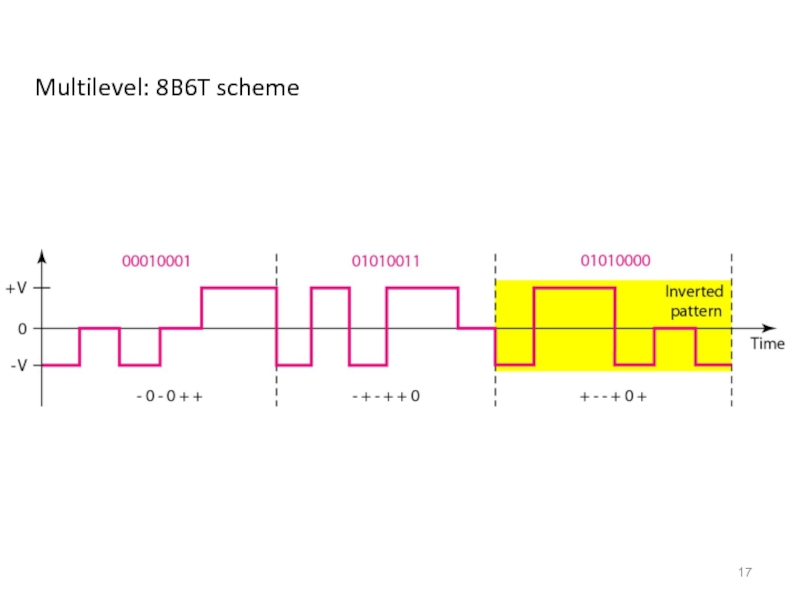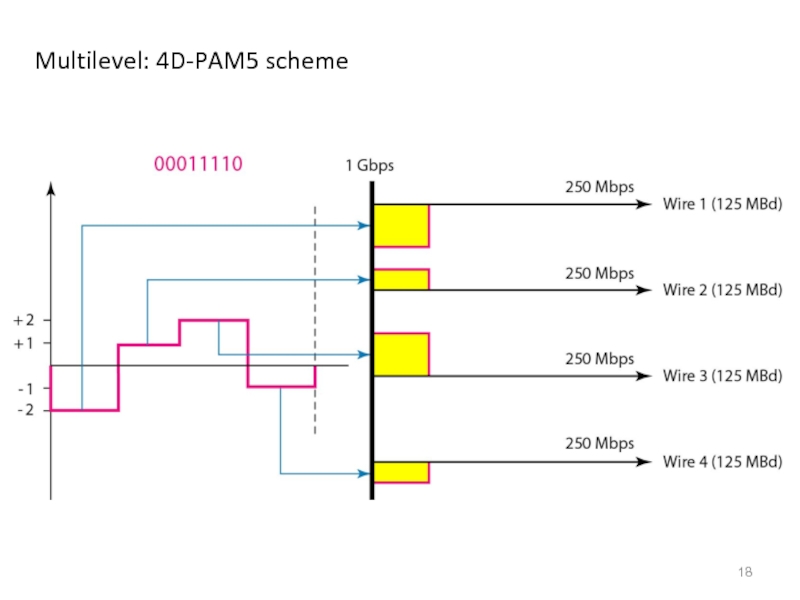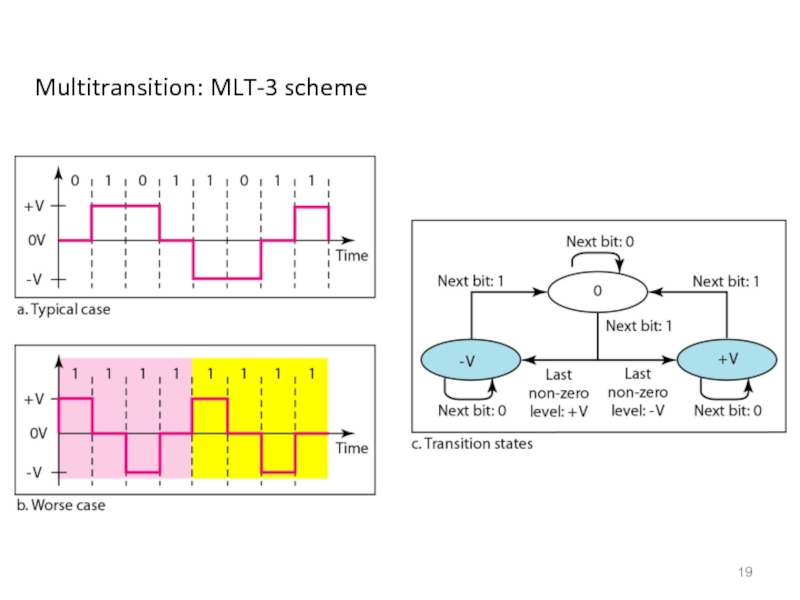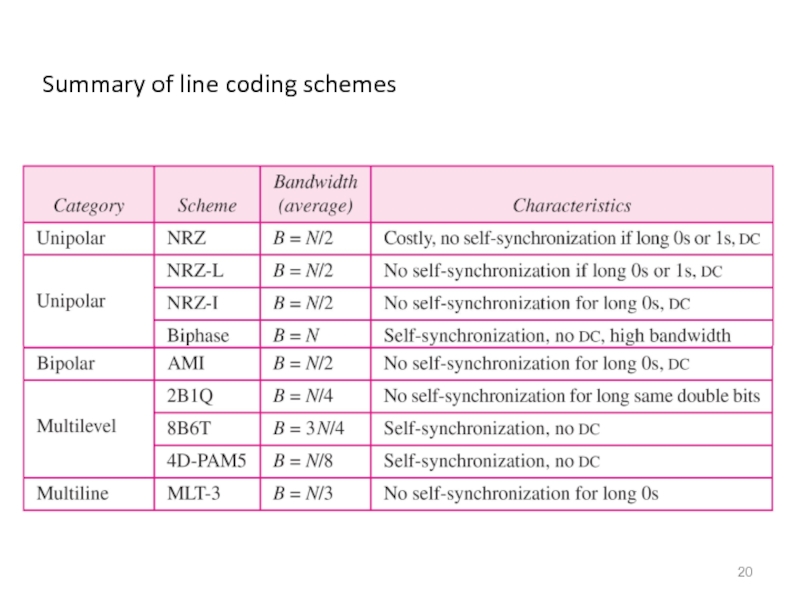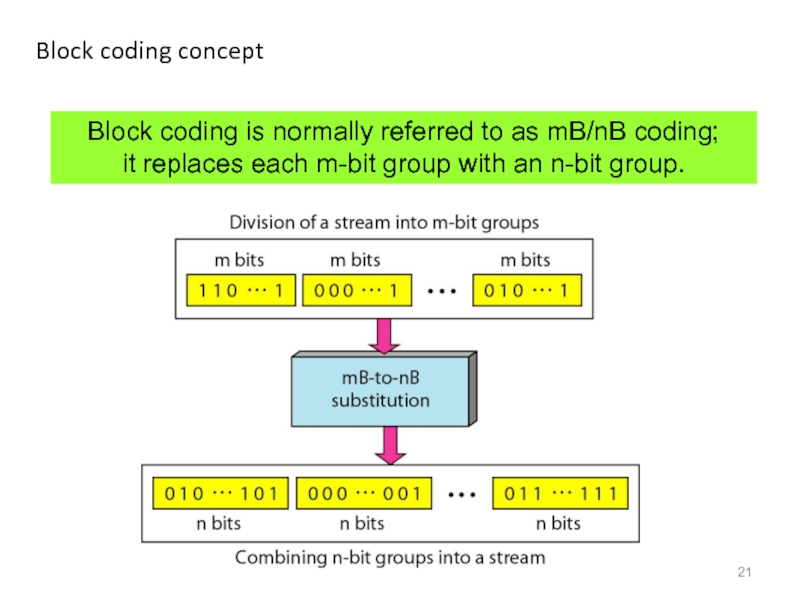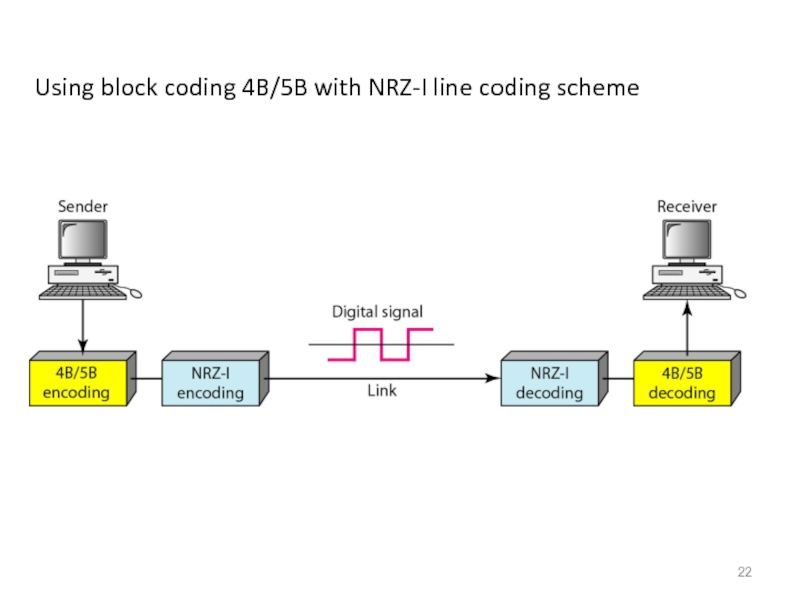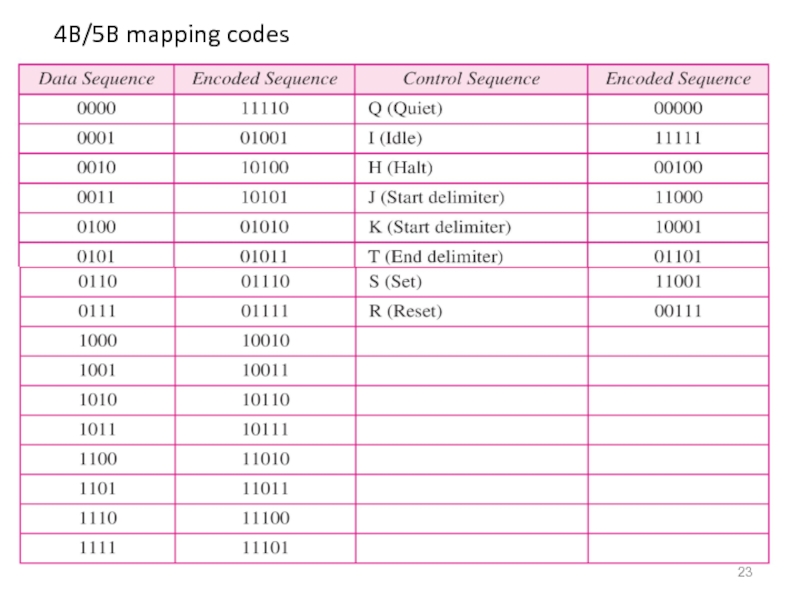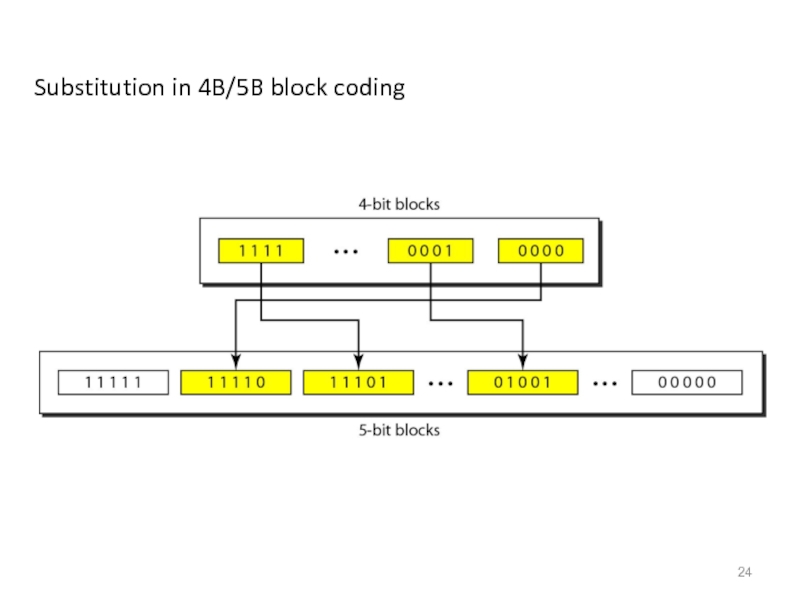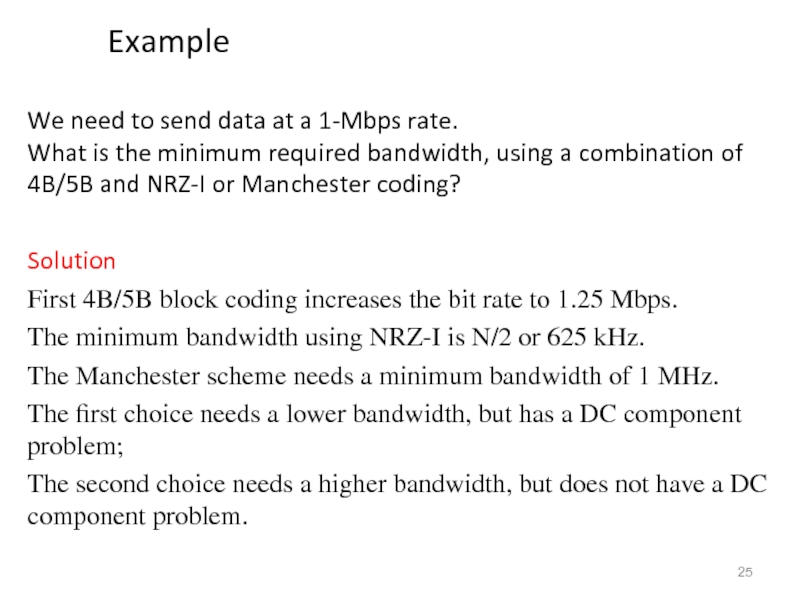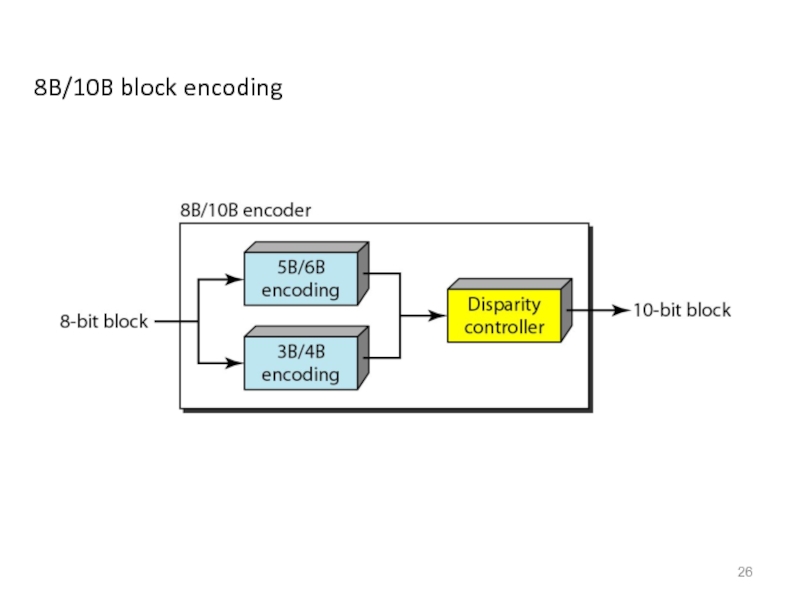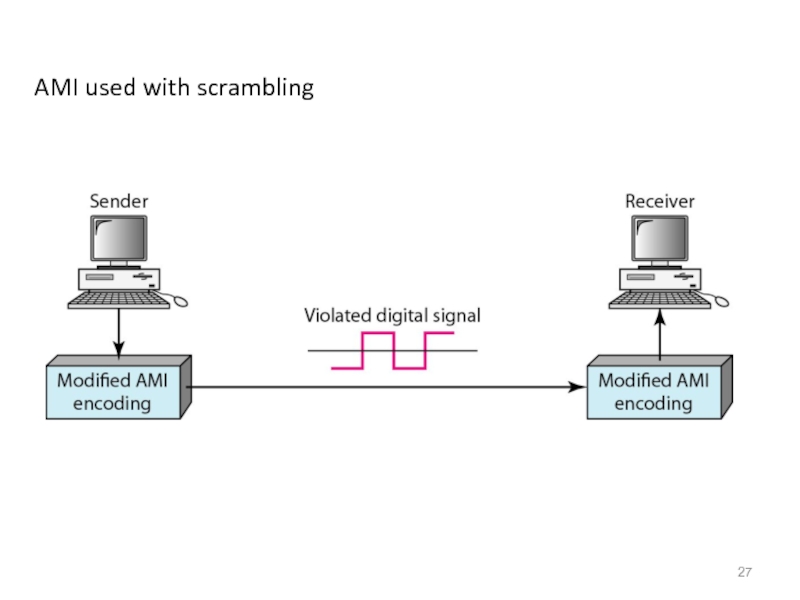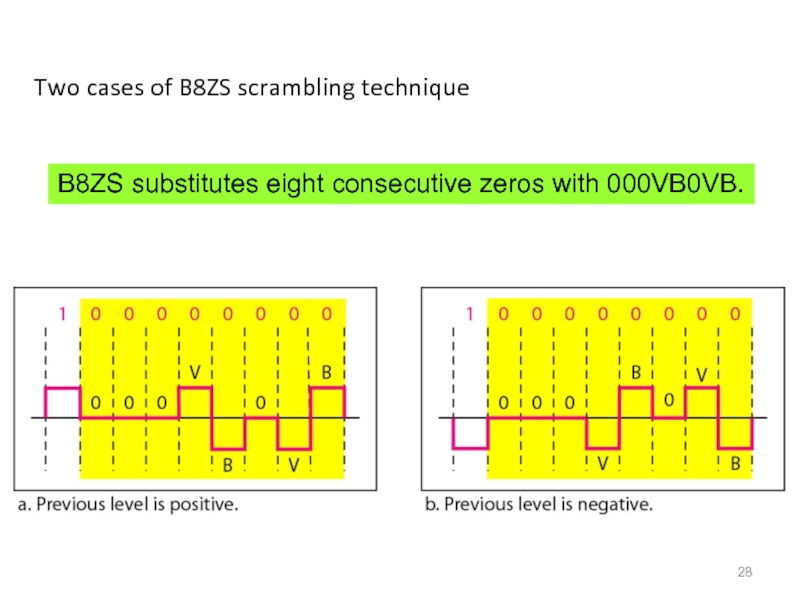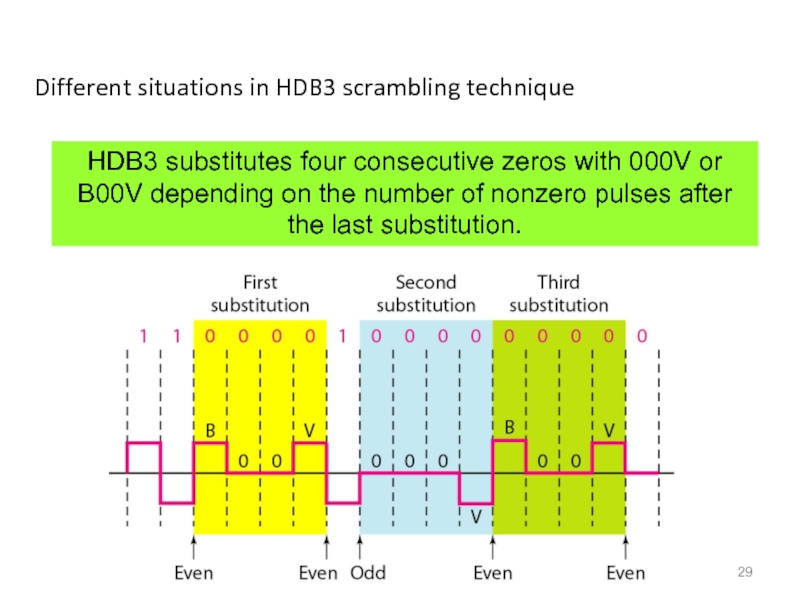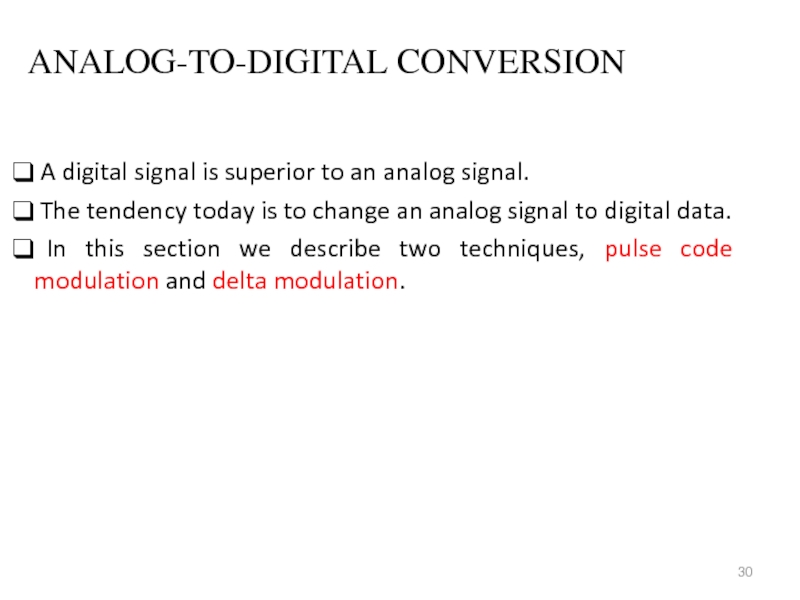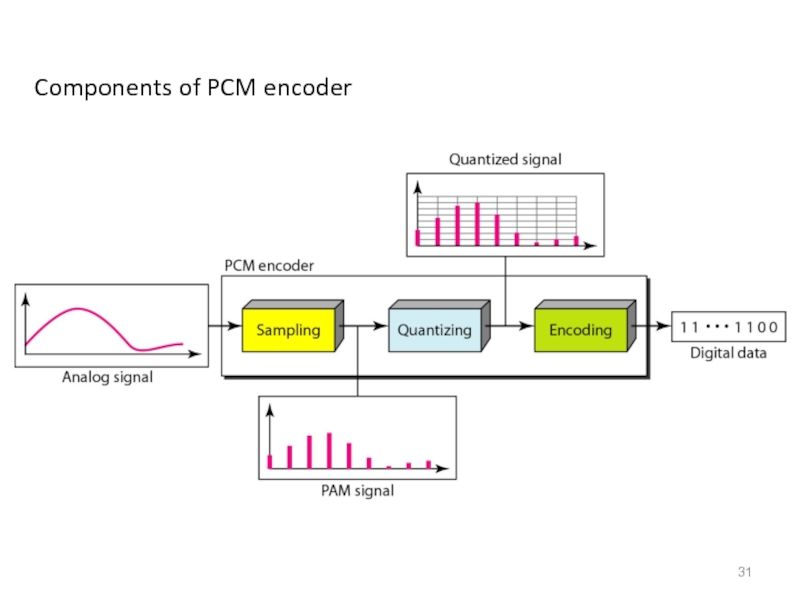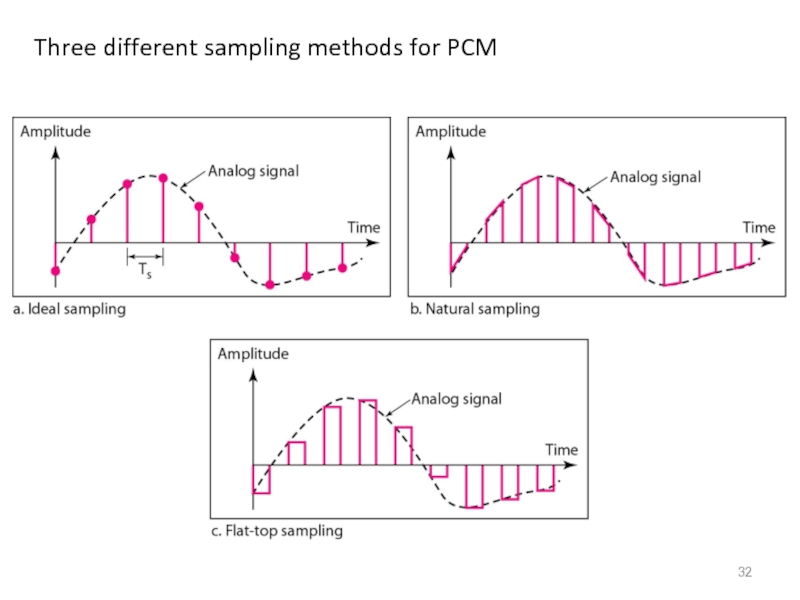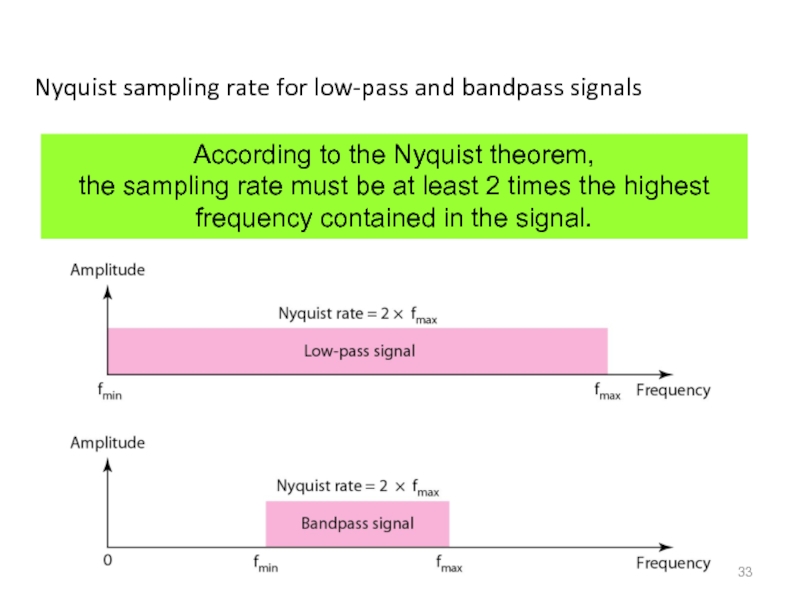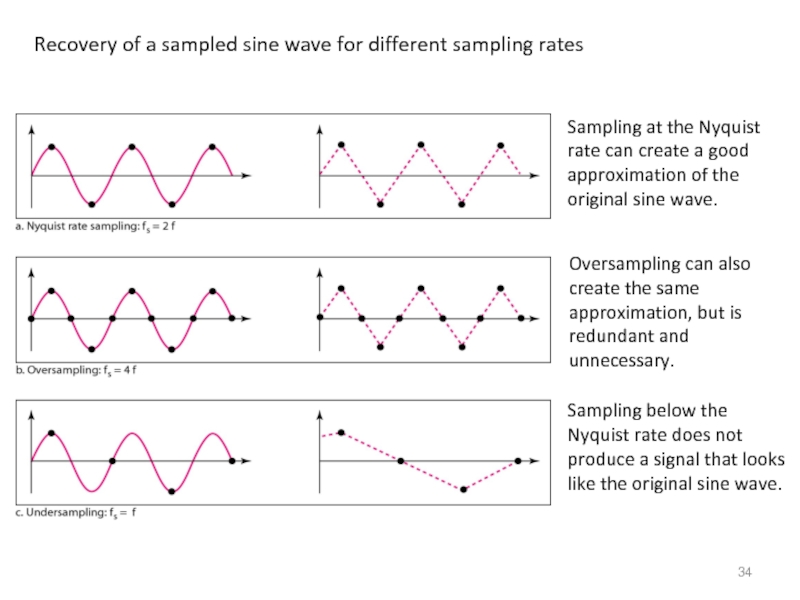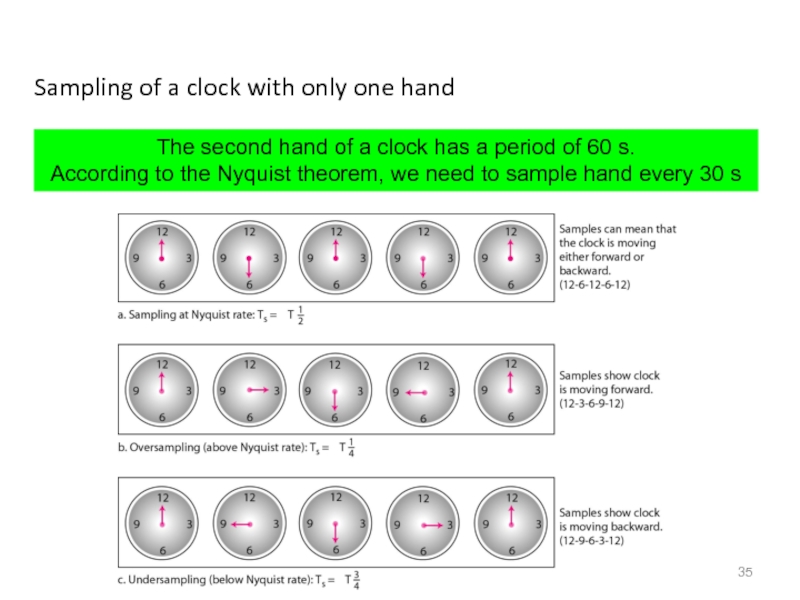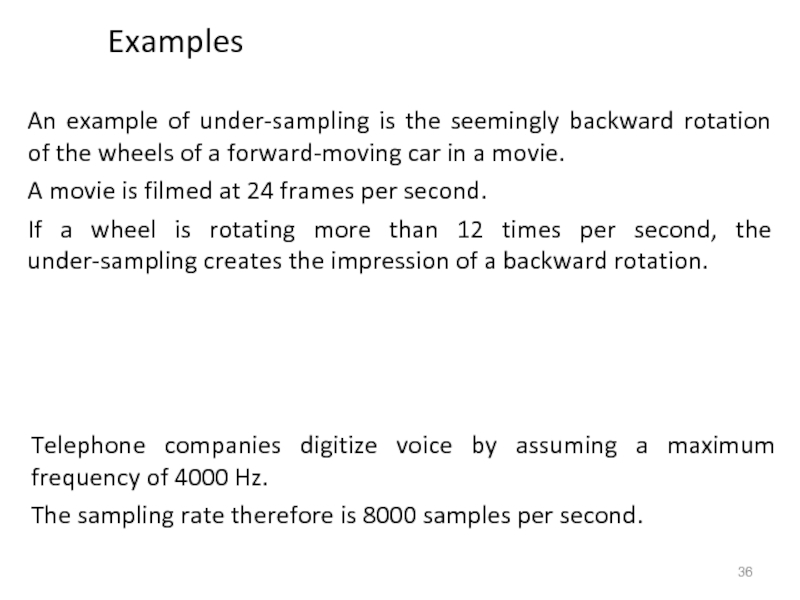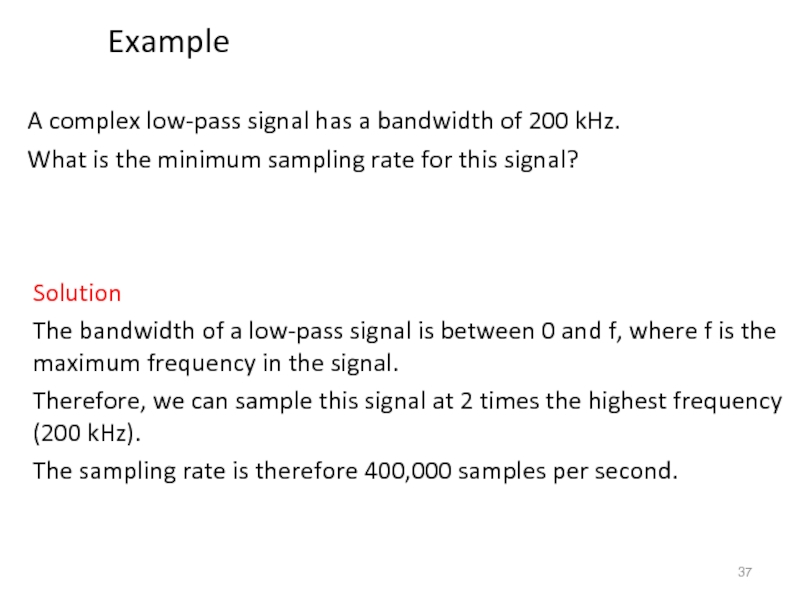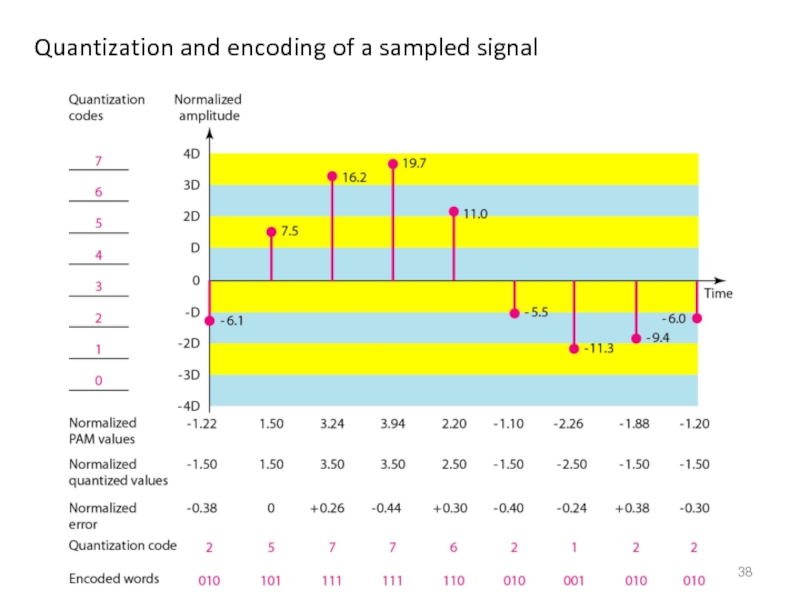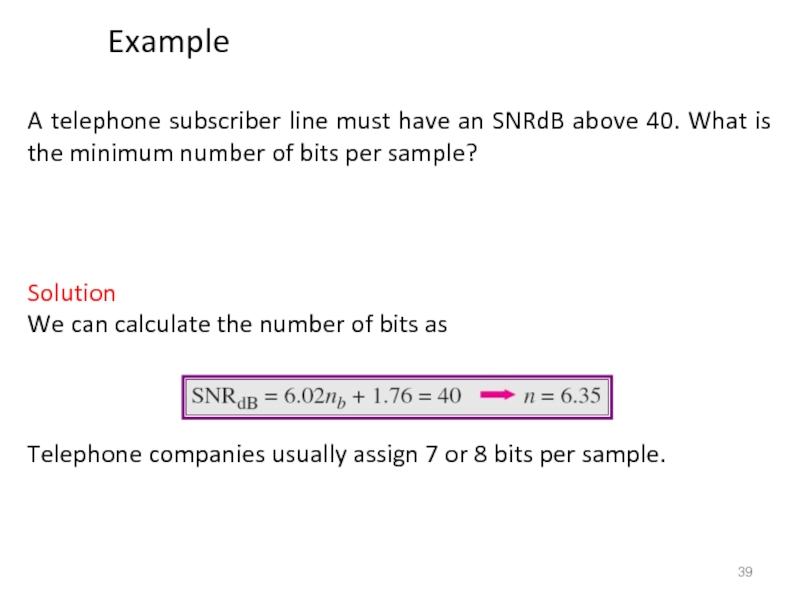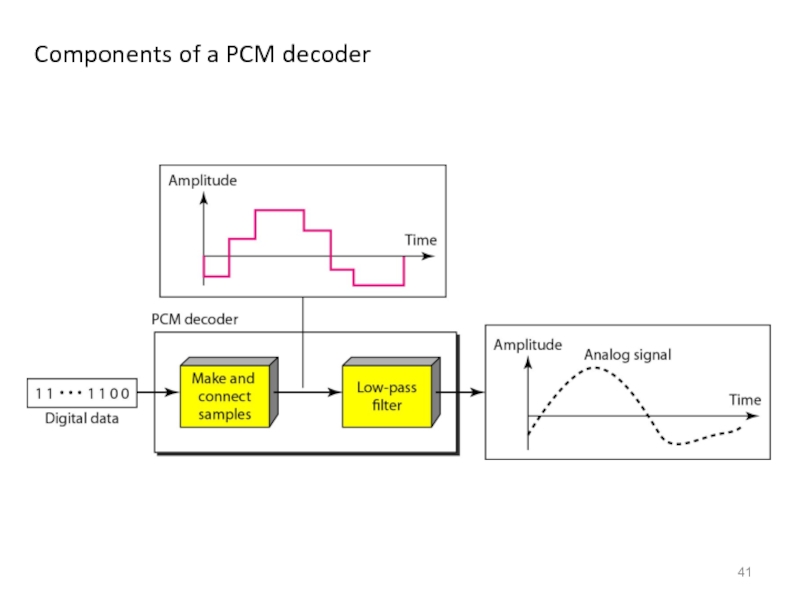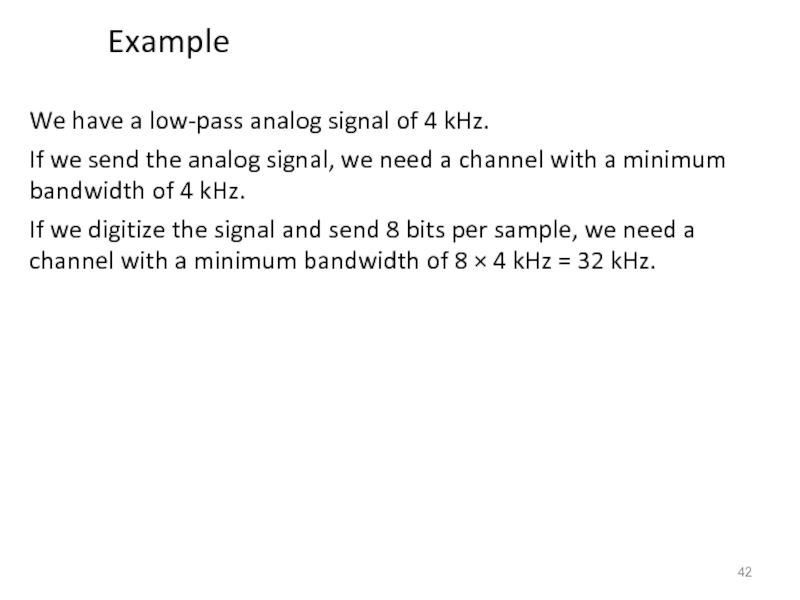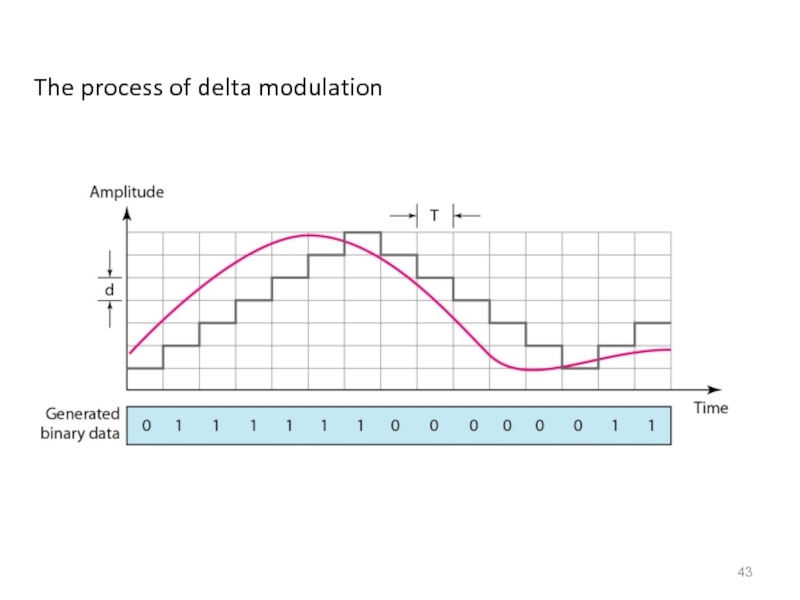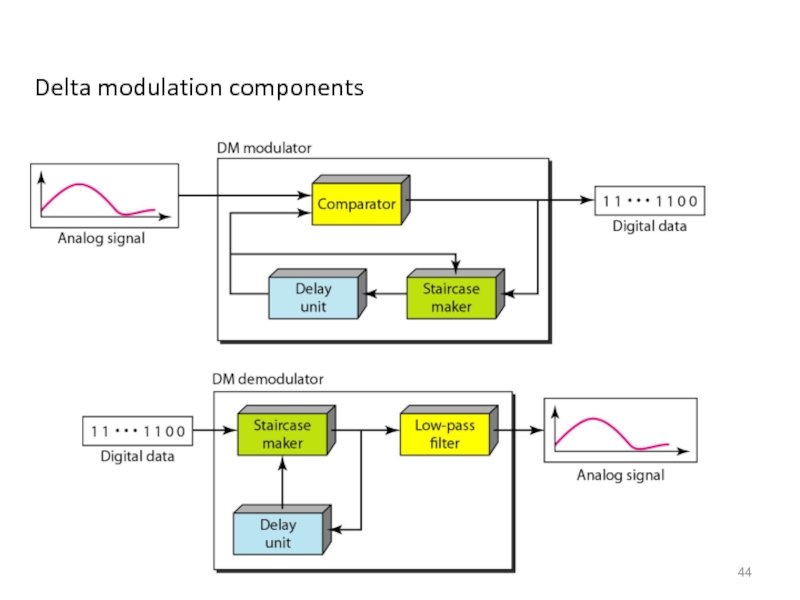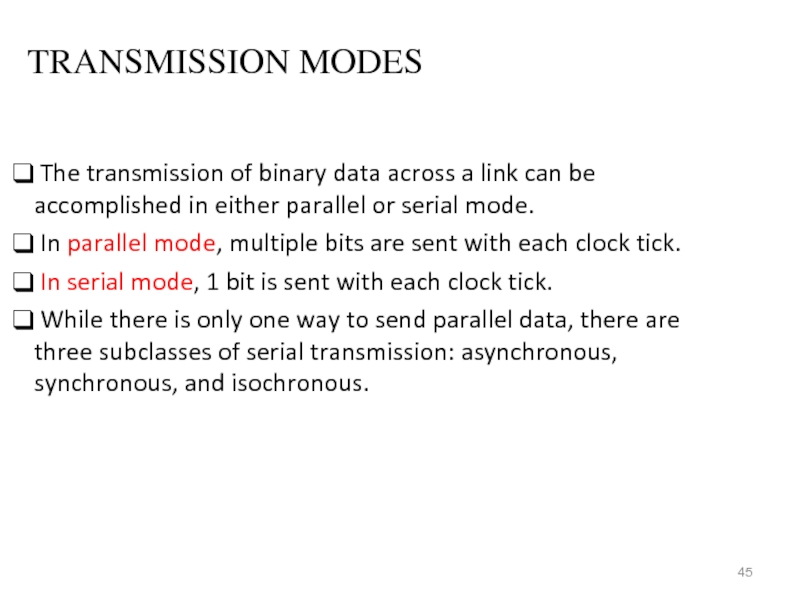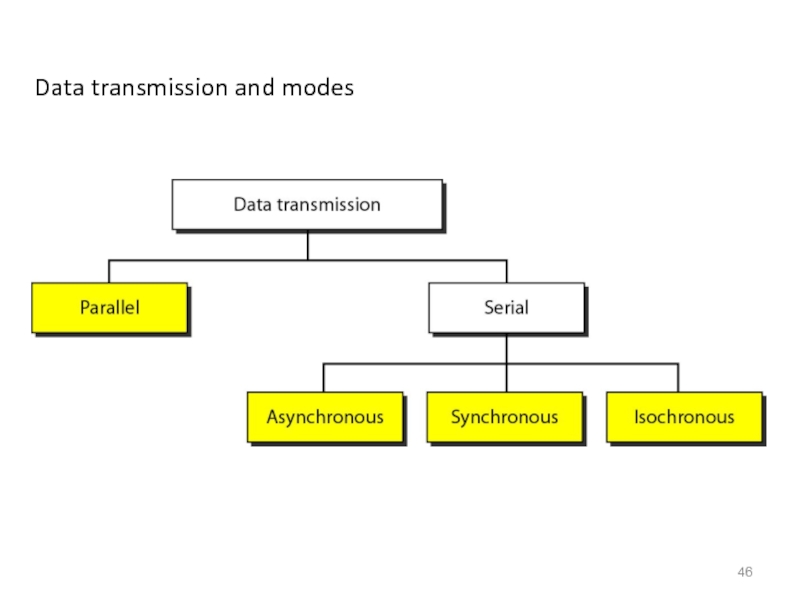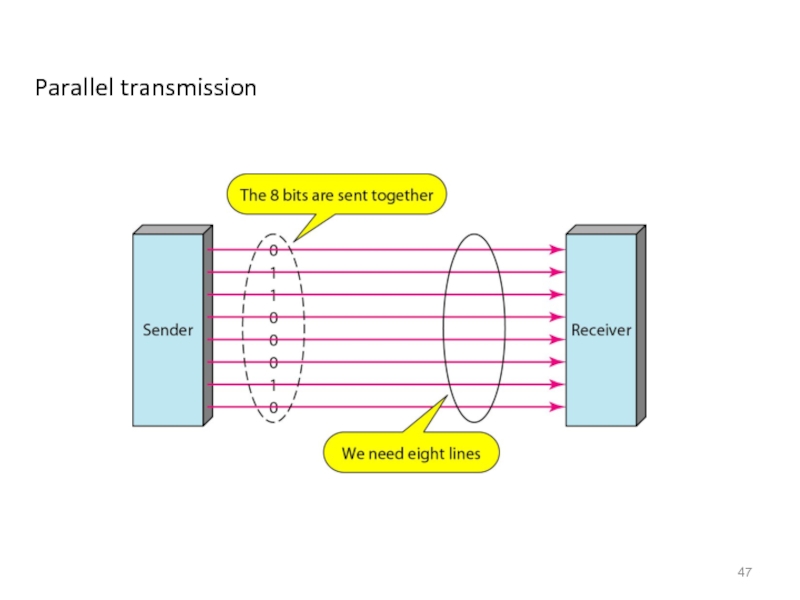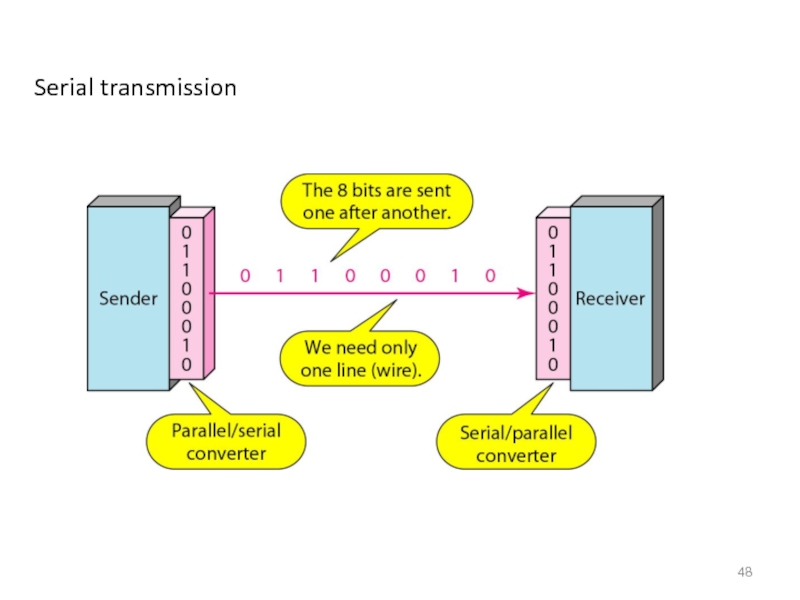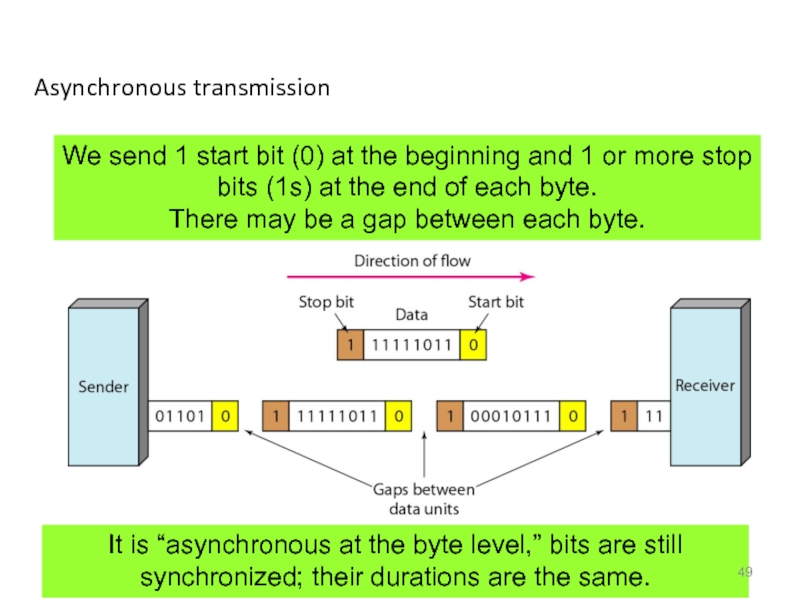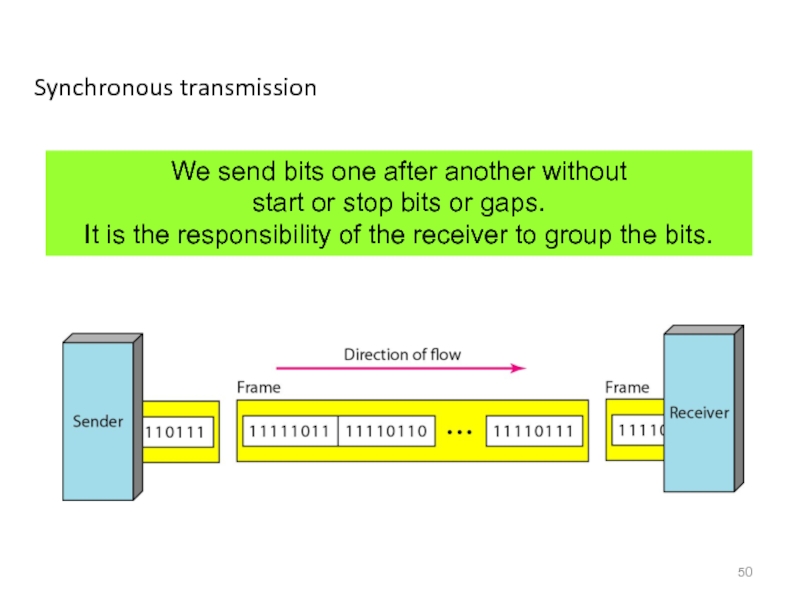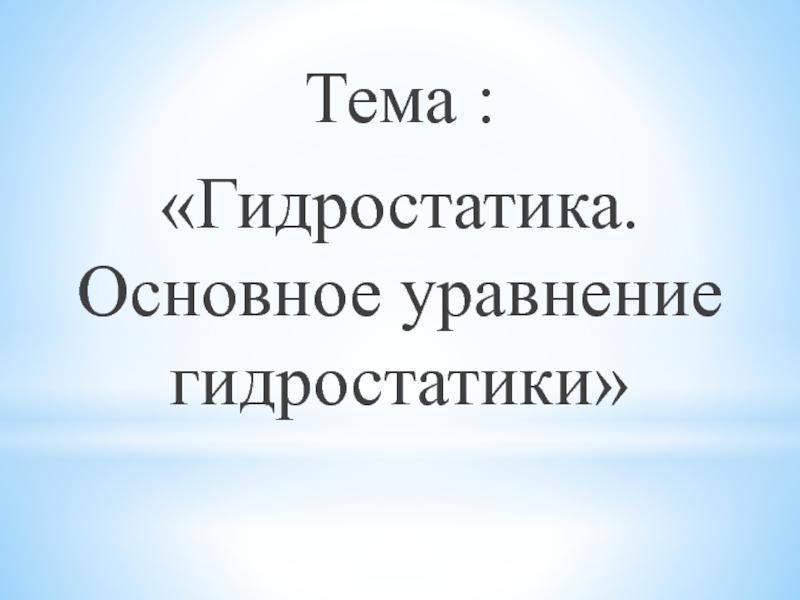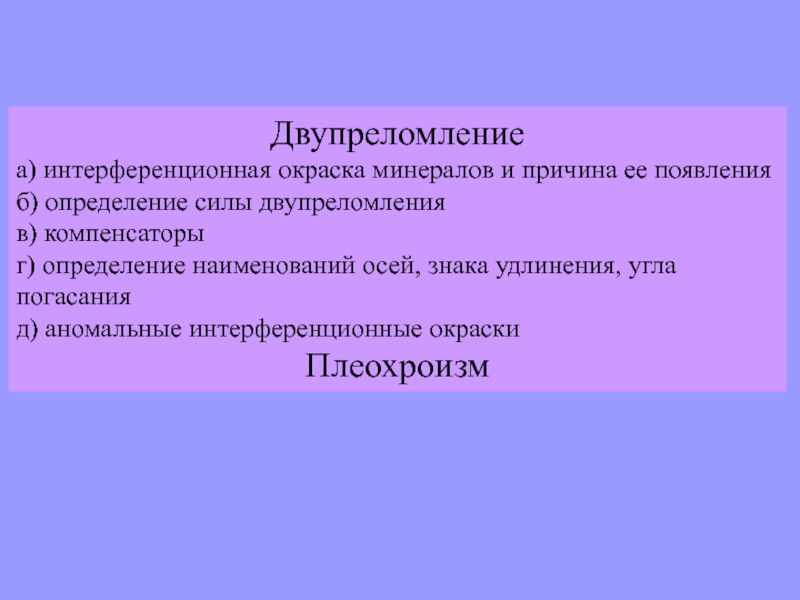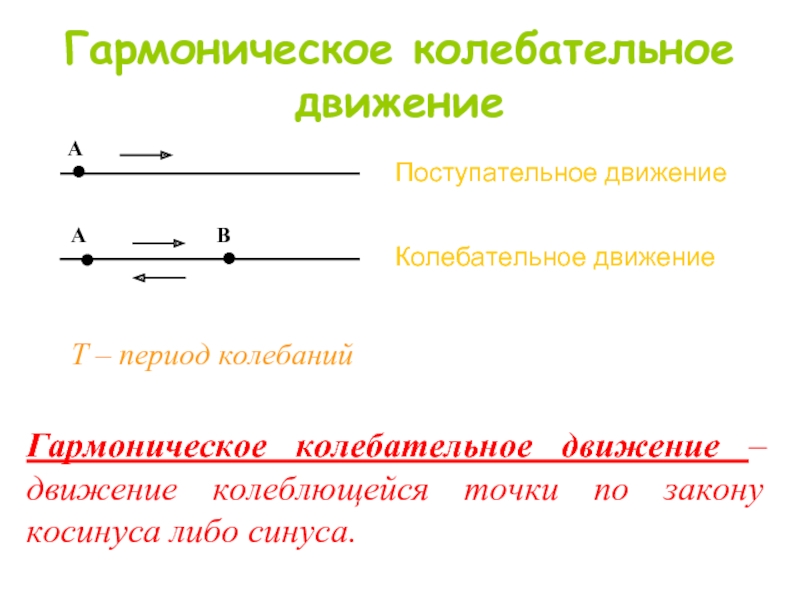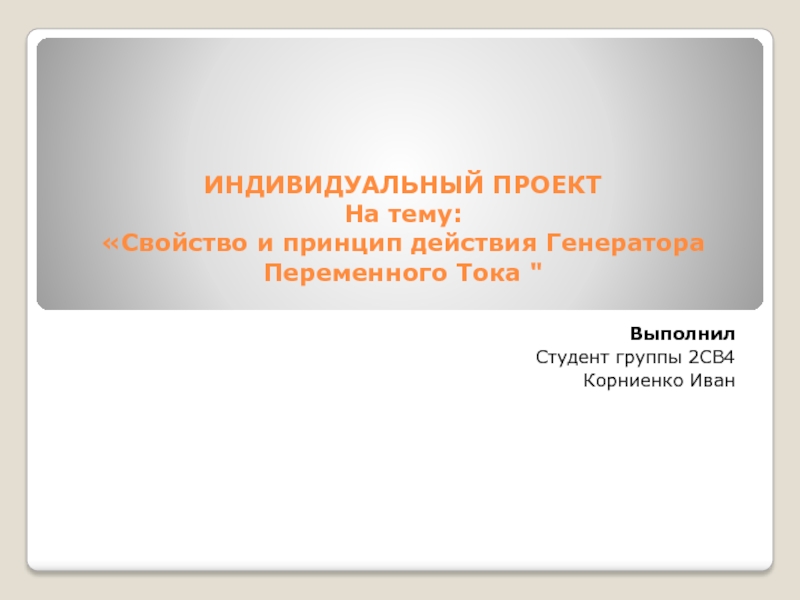- Главная
- Разное
- Дизайн
- Бизнес и предпринимательство
- Аналитика
- Образование
- Развлечения
- Красота и здоровье
- Финансы
- Государство
- Путешествия
- Спорт
- Недвижимость
- Армия
- Графика
- Культурология
- Еда и кулинария
- Лингвистика
- Английский язык
- Астрономия
- Алгебра
- Биология
- География
- Детские презентации
- Информатика
- История
- Литература
- Маркетинг
- Математика
- Медицина
- Менеджмент
- Музыка
- МХК
- Немецкий язык
- ОБЖ
- Обществознание
- Окружающий мир
- Педагогика
- Русский язык
- Технология
- Физика
- Философия
- Химия
- Шаблоны, картинки для презентаций
- Экология
- Экономика
- Юриспруденция
Timing recovery in baseband transmission. (Lecture 8) презентация
Содержание
- 1. Timing recovery in baseband transmission. (Lecture 8)
- 2. TIMING RECOVERY IN BASEBAND TRANSMISSION Lecture 8
- 3. DIGITAL-TO-DIGITAL CONVERSION We
- 4. Signal element versus data element Although the
- 5. A signal is carrying data in which
- 6. The maximum data rate of a channel
- 7. Effect of lack of synchronization
- 8. In a digital transmission, the receiver clock
- 9. Line coding schemes
- 10. Unipolar NRZ scheme
- 11. Polar NRZ-L and NRZ-I schemes Both
- 12. A system is using NRZ-I to transfer
- 13. Polar RZ scheme
- 14. Polar biphase: Manchester and differential Manchester schemes
- 15. Bipolar schemes: AMI and pseudoternary We use
- 16. Multilevel: 2B1Q scheme
- 17. Multilevel: 8B6T scheme
- 18. Multilevel: 4D-PAM5 scheme
- 19. Multitransition: MLT-3 scheme
- 20. Summary of line coding schemes
- 21. Block coding concept Block coding is normally
- 22. Using block coding 4B/5B with NRZ-I line coding scheme
- 23. 4B/5B mapping codes
- 24. Substitution in 4B/5B block coding
- 25. We need to send data at a
- 26. 8B/10B block encoding
- 27. AMI used with scrambling
- 28. Two cases of B8ZS scrambling technique B8ZS substitutes eight consecutive zeros with 000VB0VB.
- 29. Different situations in HDB3 scrambling technique HDB3
- 30. ANALOG-TO-DIGITAL CONVERSION A digital signal
- 31. Components of PCM encoder
- 32. Three different sampling methods for PCM
- 33. Nyquist sampling rate for low-pass and bandpass
- 34. Recovery of a sampled sine wave for
- 35. Sampling of a clock with only one
- 36. An example of under-sampling is the seemingly
- 37. A complex low-pass signal has a bandwidth
- 38. Quantization and encoding of a sampled signal
- 39. A telephone subscriber line must have an
- 40. We want to digitize the human voice.
- 41. Components of a PCM decoder
- 42. We have a low-pass analog signal of
- 43. The process of delta modulation
- 44. Delta modulation components
- 45. TRANSMISSION MODES The transmission of
- 46. Data transmission and modes
- 47. Parallel transmission
- 48. Serial transmission
- 49. Asynchronous transmission We send 1 start bit
- 50. Synchronous transmission We send bits one after
Слайд 1Synchronization in TCS
Timoshenko Aleksandr, Ph.D, Associate Professor
Ksenia Lomovskaya, Assistant Professor
Слайд 3 DIGITAL-TO-DIGITAL CONVERSION
We can represent digital data by using
The conversion involves three techniques: line coding, block coding, and scrambling.
Line coding is always needed.
Block coding and scrambling may or may not be needed.
Line coding and decoding
Слайд 4Signal element versus data element
Although the actual bandwidth of a digital
Слайд 5A signal is carrying data in which one data element is
If the bit rate is 100 kbps, what is the average value of the baud rate if c is between 0 and 1?
Solution
We assume that the average value of c is 1/2 . The baud rate is then
Example
Слайд 6The maximum data rate of a channel is
Nmax = 2
Does this agree with the previous formula for Nmax?
Solution
A signal with L levels actually can carry log2L bits per level.
If each level corresponds to one signal element and we assume the average case (c = 1/2), then we have
Example
Слайд 8In a digital transmission, the receiver clock is 0.1 percent faster
How many extra bits per second does the receiver receive if the data rate is 1 kbps?
How many if the data rate is 1 Mbps?
Solution
At 1 kbps, the receiver receives 1001 bps instead of 1000 bps.
At 1 Mbps, the receiver receives 1,001,000 bps instead of 1,000,000 bps.
Example
Слайд 11Polar NRZ-L and NRZ-I schemes
Both have an average signal rate
Both have a DC component problem.
inversion or lack of inversion determines value of the bit
level of voltage determines value of the bit
Слайд 12A system is using NRZ-I to transfer 10-Mbps data.
What are
Solution
The average signal rate is S = N/2 = 500 kbaud.
The minimum bandwidth for this average baud rate is
Bmin = S = 500 kHz.
Example
Слайд 14Polar biphase: Manchester and differential Manchester schemes
Transition at the middle
The minimum bandwidth is 2 times that of NRZ
Слайд 15Bipolar schemes: AMI and pseudoternary
We use three levels: positive, zero, and
In mBnL schemes, a pattern of m data elements is encoded as a pattern of n signal elements in which 2m ≤ Ln
Слайд 21Block coding concept
Block coding is normally referred to as mB/nB coding;
it
Слайд 25We need to send data at a 1-Mbps rate.
What is
Solution
First 4B/5B block coding increases the bit rate to 1.25 Mbps.
The minimum bandwidth using NRZ-I is N/2 or 625 kHz.
The Manchester scheme needs a minimum bandwidth of 1 MHz.
The first choice needs a lower bandwidth, but has a DC component problem;
The second choice needs a higher bandwidth, but does not have a DC component problem.
Example
Слайд 28Two cases of B8ZS scrambling technique
B8ZS substitutes eight consecutive zeros with
Слайд 29Different situations in HDB3 scrambling technique
HDB3 substitutes four consecutive zeros with
Слайд 30ANALOG-TO-DIGITAL CONVERSION
A digital signal is superior to an analog signal.
The tendency today is to change an analog signal to digital data.
In this section we describe two techniques, pulse code modulation and delta modulation.
Слайд 33Nyquist sampling rate for low-pass and bandpass signals
According to the Nyquist
the sampling rate must be at least 2 times the highest frequency contained in the signal.
Слайд 34Recovery of a sampled sine wave for different sampling rates
Sampling at
Oversampling can also create the same approximation, but is redundant and unnecessary.
Sampling below the Nyquist rate does not produce a signal that looks like the original sine wave.
Слайд 35Sampling of a clock with only one hand
The second hand of
According to the Nyquist theorem, we need to sample hand every 30 s
Слайд 36An example of under-sampling is the seemingly backward rotation of the
A movie is filmed at 24 frames per second.
If a wheel is rotating more than 12 times per second, the under-sampling creates the impression of a backward rotation.
Examples
Telephone companies digitize voice by assuming a maximum frequency of 4000 Hz.
The sampling rate therefore is 8000 samples per second.
Слайд 37A complex low-pass signal has a bandwidth of 200 kHz.
What is
Solution
The bandwidth of a low-pass signal is between 0 and f, where f is the maximum frequency in the signal.
Therefore, we can sample this signal at 2 times the highest frequency (200 kHz).
The sampling rate is therefore 400,000 samples per second.
Example
Слайд 39A telephone subscriber line must have an SNRdB above 40. What
Solution
We can calculate the number of bits as
Telephone companies usually assign 7 or 8 bits per sample.
Example
Слайд 40We want to digitize the human voice. What is the bit
Solution
The human voice normally contains frequencies from 0 to 4000 Hz. So the sampling rate and bit rate are calculated as follows:
Example
Слайд 42We have a low-pass analog signal of 4 kHz.
If we
If we digitize the signal and send 8 bits per sample, we need a channel with a minimum bandwidth of 8 × 4 kHz = 32 kHz.
Example
Слайд 45TRANSMISSION MODES
The transmission of binary data across a link can
In parallel mode, multiple bits are sent with each clock tick.
In serial mode, 1 bit is sent with each clock tick.
While there is only one way to send parallel data, there are three subclasses of serial transmission: asynchronous, synchronous, and isochronous.
Слайд 49Asynchronous transmission
We send 1 start bit (0) at the beginning and
There may be a gap between each byte.
It is “asynchronous at the byte level,” bits are still synchronized; their durations are the same.
Слайд 50Synchronous transmission
We send bits one after another without
start or stop
It is the responsibility of the receiver to group the bits.

